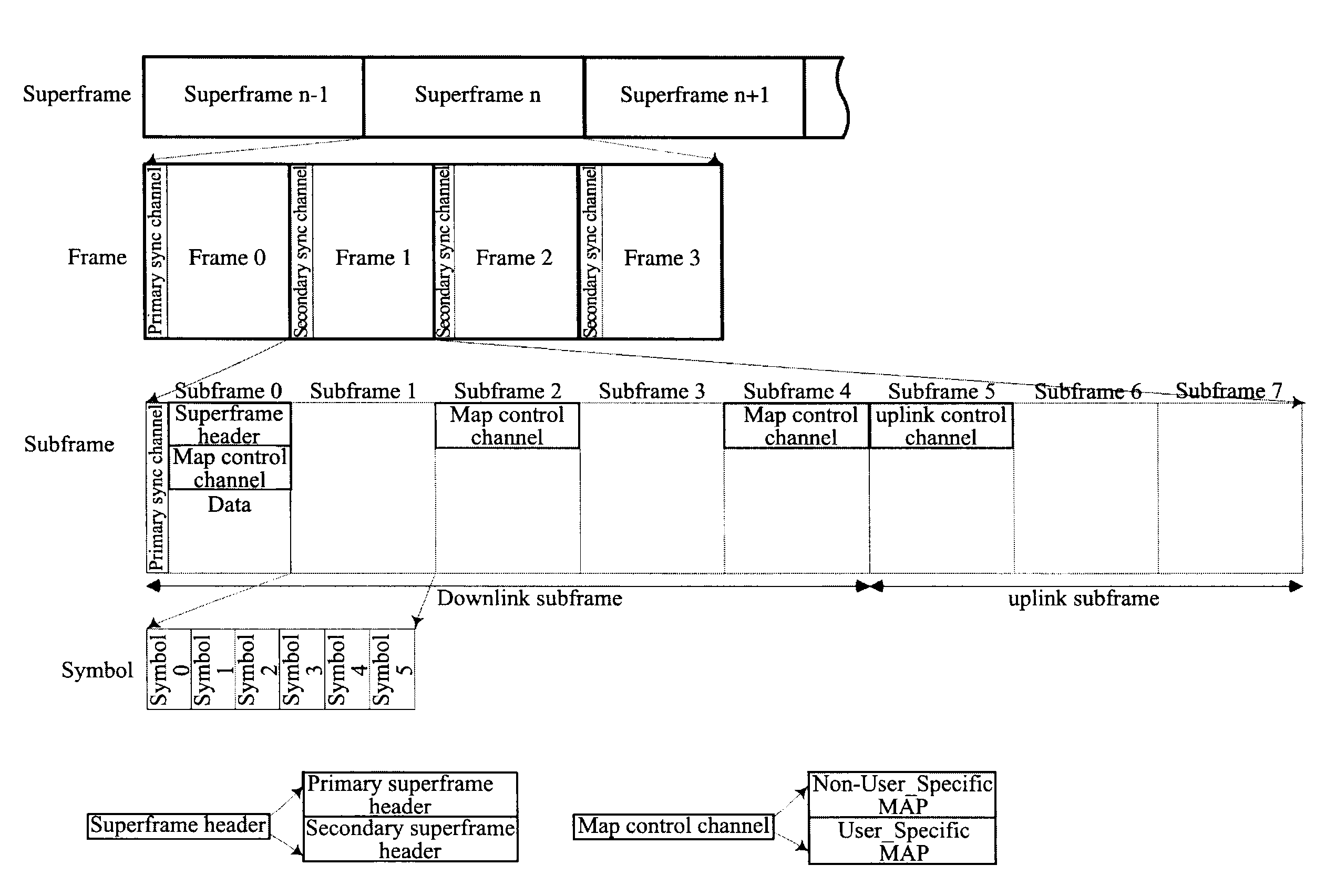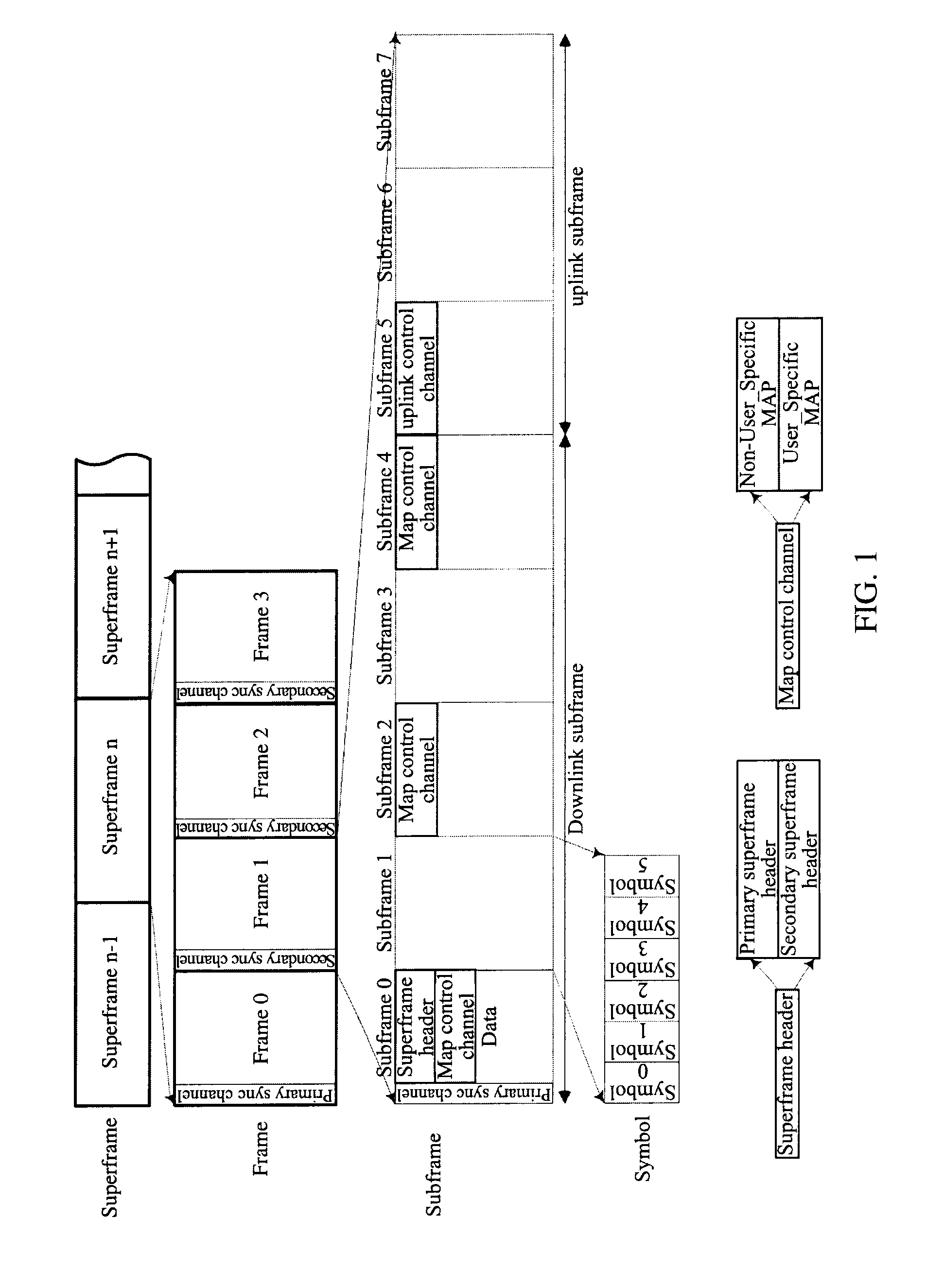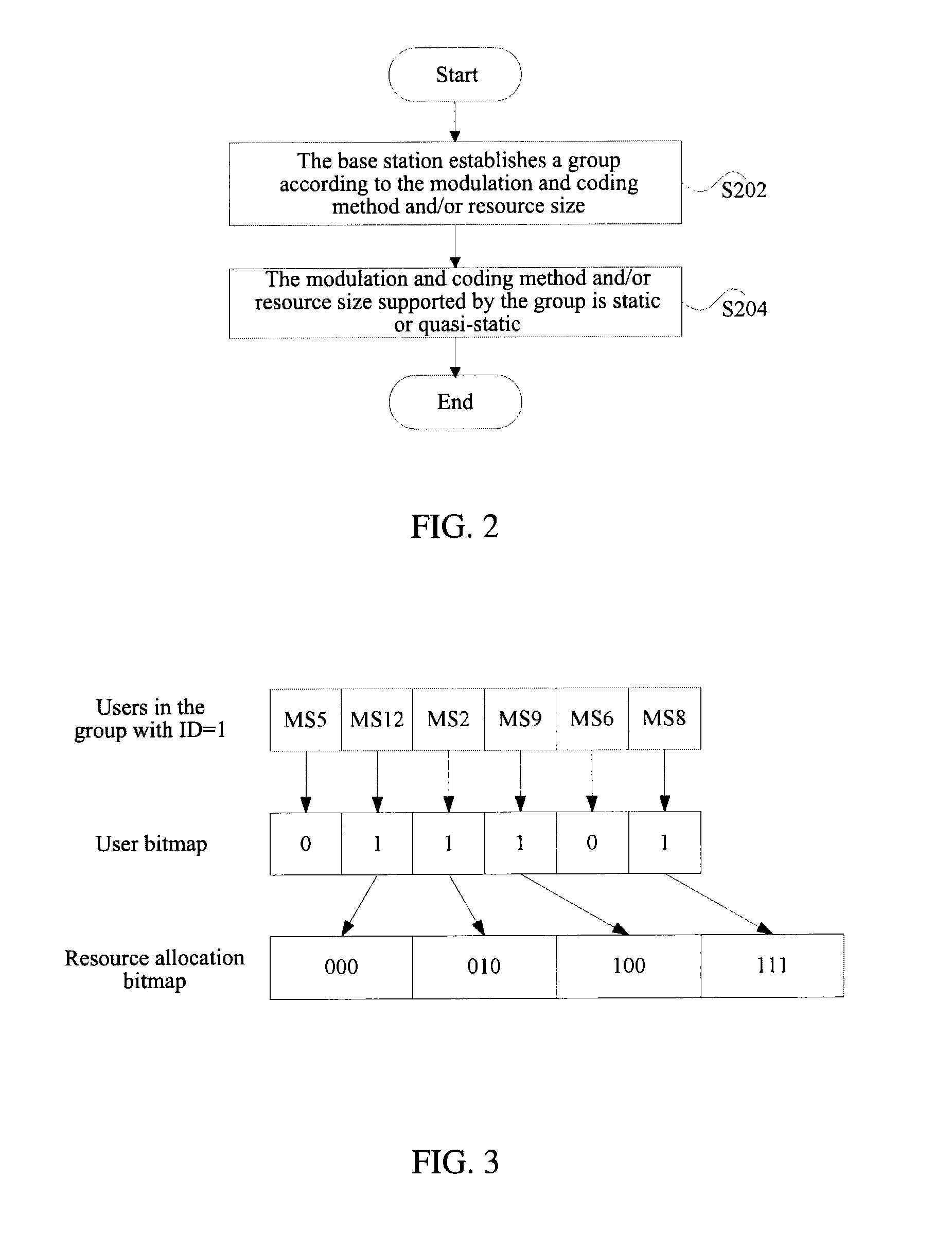Processing Method for Group Resource Allocation
a resource allocation and processing method technology, applied in the field of communication, can solve the problems of reducing the transmission efficiency increasing the complexity of the base station performing radio resource scheduling, and wasting precious radio resources in so as to reduce the complexity of the resource allocation method, improve the utilization of the transmission bandwidth of the wireless communication system, and control overhead
- Summary
- Abstract
- Description
- Claims
- Application Information
AI Technical Summary
Benefits of technology
Problems solved by technology
Method used
Image
Examples
first example
The First Example
[0073]This example describes sorting part or all of said multiple modulation and coding schemes according to modulation scheme and / or coding rate, and selecting part or all of the sorted modulation and coding schemes as a modulation and coding scheme set. Specifically, suppose the base station supports a total of C modulation and coding schemes, and select c modulation and coding schemes from the C modulation and coding schemes, and further sort the c modulation and coding schemes, afterwards, select and group some or all of the c modulation and coding schemes into a modulation and coding scheme set, where C is greater than or equal to c, and both C and c are natural numbers. FIG. 4 illustrates the modulation and coding scheme set configuration 1 of the group in a macro base station, as shown in FIG. 4, when c=16, that is, Sc={QPSK, 31 / 256, QPSK, 48 / 256, QPSK, 71 / 256, QPSK, 101 / 256, QPSK, 135 / 256, QPSK, 171 / 256, 16QAM, 102 / 256, 16QAM, 128 / 256, 16QAM, 155 / 256, 16QAM,...
second example
The Second Example
[0074]This example describes sorting part or all of said multiple modulation and coding schemes according to modulation scheme and / or coding rate, and selecting the modulation and coding scheme in turn from the sorted modulation and coding schemes to perform the modulation and coding scheme set division; wherein, the numbers of modulation and coding schemes included in the a plurality of divided modulation and coding scheme sets are same or different, and the intersections of different modulation and coding scheme sets are all empty sets. That is to say, suppose the base station supports a total of C modulation and coding schemes, and select c modulation and coding schemes from the C modulation and coding schemes, and further select c modulation and coding schemes according to the order from low coding rate to high coding rate, and in turn from the sorted modulation and coding schemes, select modulation and coding schemes to perform modulation and coding scheme set...
third example
The Third Example
[0079]This example describes sorting part or all of said multiple modulation and coding schemes according to modulation scheme and / or coding rate, transposing part of adjacent modulation and coding schemes in the sorted modulation and coding schemes, and selecting the modulation and coding scheme in turn from the transposed modulation and coding schemes to perform the modulation and coding scheme set division, and the transposed modulation and coding schemes belong to different modulation and coding scheme sets; wherein, the numbers of modulation and coding schemes included in the a plurality of divided modulation and coding scheme sets are same or different, and the intersections of different modulation and coding scheme sets are all empty sets. That is to say, suppose the base station supports a total of C modulation and coding schemes, and select c modulation and coding schemes from the C modulation and coding schemes, and further select c modulation and coding s...
PUM
 Login to View More
Login to View More Abstract
Description
Claims
Application Information
 Login to View More
Login to View More - R&D
- Intellectual Property
- Life Sciences
- Materials
- Tech Scout
- Unparalleled Data Quality
- Higher Quality Content
- 60% Fewer Hallucinations
Browse by: Latest US Patents, China's latest patents, Technical Efficacy Thesaurus, Application Domain, Technology Topic, Popular Technical Reports.
© 2025 PatSnap. All rights reserved.Legal|Privacy policy|Modern Slavery Act Transparency Statement|Sitemap|About US| Contact US: help@patsnap.com



